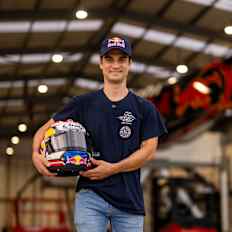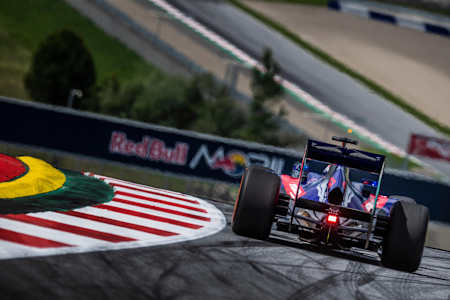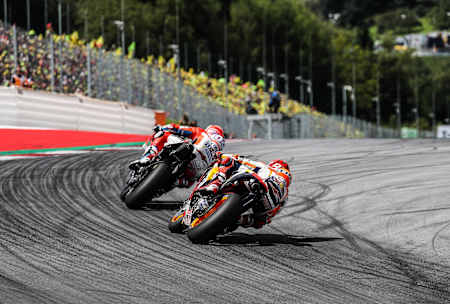Red Bull Motorsports

F1
Watch the 4 wheels of F1 go head to head with the 2 wheels of MotoGP
If you've always wanted to see a Formula One car race a MotoGP bike, now's your chance. Watch Marc Márquez take both on a hot lap of the Red Bull Ring in Austria.
Be sure to download the free Red Bull TV app and catch the motorsports action on all your devices! Get the app here
A MotoGP machine can accelerate like hell and achieve an incredible top speed, but it's no match for a Formula One car in terms of downforce and braking power. Surely that means a MotoGP bike doesn't stand a chance against an F1 car – or does it? Watch MotoGP titan Marc Márquez take the two vehicles around the Red Bull Ring in the video above ahead of the MotoGP of Austria this weekend.
Below, we compare and contrast the differences between two of motorsport's fastest machines.
Marc Márquez takes a Toro Rosso car for a spin around Red Bull Ring
© Philip Platzer/Red Bull Content Pool
Acceleration
At 0-100kph, the F1 car wants to spin up and the MotoGP bike just can't keep the front wheel on the ground. At this point, both machines can achieve a measure of around 2.6s. MotoGP trumps F1 at 0-200kph. At around 180kph, the electronics take full control in the F1 car, while MotoGP riders can still work the throttle. The F1 car does it in 5.2s, but it's 4.8s for the bike. The MotoGP bike needs 11.8s to go from 0-300kph, while the single-seater F1 car needs only 10.6s.
Top speed
There's not much competition here. At the 2018 Austrian Grand Prix, Kimi Räikkönen took his Ferrari around the Red Bull Ring in 1m 06.957s to notch the circuit's fastest race lap. MotoGP's quickest race lap in Spielberg is 1m 24.312s, recorded by Johann Zarco in 2017. The highest average speed for F1 cars at Red Bull Ring is around the 240kph mark. It's 182kph for MotoGP. Why the big difference? F1 cars have mind-blowing cornering speeds because they have more rubber on the ground and incredible aerodynamics, which increase downforce with more speed.
Watch those hot laps again in full screen:
Downforce
A MotoGP bike has two main problems here. The motorcycle is small but it's no match for a Formula One car with extremely sophisticated aerodynamics. The car can achieve much better traction due to its bigger tyres and better aerodynamics. The single-seater can fly in mid- and high-speed turns, slowing down from 312kph to a still-fast 240kph. At the same spot, MotoGP bikes need to go from 327kph to 115kph. In some bends, F1 drivers just need to ease off the throttle a little, while MotoGP riders have to brake really hard.
Braking
An F1 car has no rival here and is able to generate forces approaching 5G. Without wings, flaps and so on, MotoGP bikes can't compete in cornering speed. The single-seater is more stable thanks to a lower centre of gravity and better traction, while a MotoGP rear wheel is up in the air during hard braking, meaning the bike has to brake 200m earlier. The MotoGP rider has to use his body all the time while the driver “only” has to work the steering wheel and the pedals.








